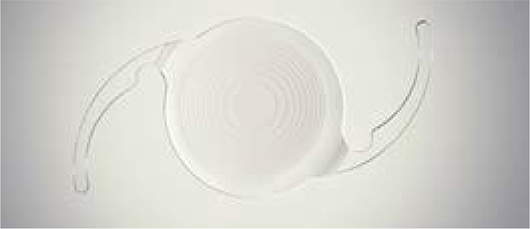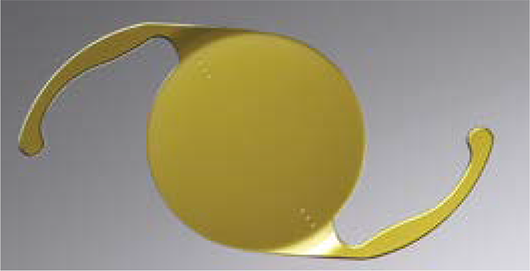Understanding the various intraocular lenses (IOLs) for cataract surgery is crucial for an ophthalmologist.
Here’s a quick primer on types of IOLs and some factors both you and your patients should consider when choosing a lens.
For a surgeon, the integrity of the capsular bag can narrow the options of lens choices. Although both a foldable one-piece IOL and three-piece IOL can be placed in the capsular bag, in an uncomplicated surgery, the goal is typically to place the one-piece version in the bag.
However, if cataract surgery is complicated by a posterior capsular rupture and there is sufficient anterior capsular support, a three-piece IOL can be placed in the ciliary sulcus. Remember, a one-piece IOL should not be placed in the sulcus because chafing of the haptics against the iris can cause uveitis-glaucomahyphema (UGH) syndrome. If there is complete lack of capsular support, anterior chamber IOLs (ACIOLs) can be used. ACIOLs have four-point fixation that is supported by the anterior chamber angle.
The visual goal of a patient can also help determine the type of lens implanted. In patients who are amenable to wearing glasses, a monofocal IOL can be used. In fact, monofocal IOLs that have one focusing distance are the most common type of implantable lens.
Most patients prefer to be set for distance and wear reading glasses for close work. For patients who would like to be spectacle-free, however, next-generation or “premium” IOLs have been developed to address presbyopia and astigmatism. These include multifocal, accommodating and toric IOLs.
Multifocal IOLs
Current multifocal IOLs have alternating zones for near and distance correction using a combination of geometric optics and diffraction optics. Patients considered for a multifocal IOL should have good potential vision without macular pathology or corneal endothelial dysfunction. You should spend extra time counseling patients about the goals of multifocal IOLs as well as their limitations.
Although multifocal lenses allow for an increased range of focus and reduced dependence on spectacles, their disadvantages include reduced contrast sensitivity and distance vision, as well as the presence of glare and halos, especially at night. The surgeon should be prepared to manage residual postoperative refractive errors with refractive surgery, spectacle or contact lens correction and possibly IOL exchange.
 |
|
Tecnis Symfony IOL Implant
|
Accommodating IOLs
Accommodating and pseudoaccommodating lenses incorporate different mechanisms designed to generate forward IOL displacement during accommodative effort, but it is unclear if these lenses work by IOL movement or another mechanism.
 |
|
AcrySof Toric IOL Implant
|
Toric IOLs
Toric IOLs are designed to correct astigmatism without incisions in the cornea. Current toric IOLs in the United States come in powers that can correct from 1.00 to 4.00 D in the spectacle plane. To accurately determine the power of the toric IOL, a surgeon must measure the amount of corneal astigmatism and not the total refractive astigmatism.
Choosing the ideal IOL should offer advantages to both the surgeon and the patient. Hopefully, this overview will help you choose the best lens for your patient.
* * *
 About the author:
About the author: Victoria H. Yom, MD, MSCI, is a cornea specialist at UCLA and joined the
YO Info Editorial Board in 2018.